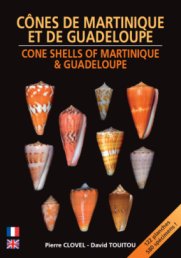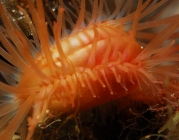Conidae From Seychelles

Conidae From Seychelles (2005)
By Touitou David, Last Full Revision : april 2014
Last Update : 23 Feb. 2016
A lot more informations can be found in this book (French Version and English version) :
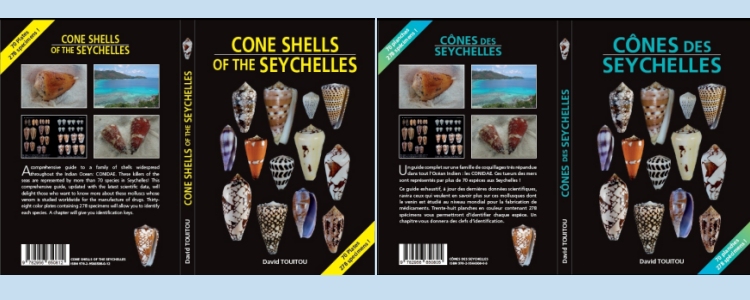
GENERAL INFORMATIONS ABOUT SPECIES AND ISLANDS
In order to have an exhaustive species list, I used two different books :
- Marine Shells of the Seychelles Alan Jarret book
- The Manual of Living Conidae Röckel, Korn & Kohn
Both are recent and good litterature to start with. Unfortunately these two books offer a different list concerning Seychelles cone shells. The one from A. Jarret shows 56 species and Röckel, Korn & Kohn one roughly 80.
I must add the following information to your knowledge : even if the Marine shells of the Seychelles is the most recent book, the informations inside were collected a long time ago while Mr Alan Jarret was living there. He started the book but never finished it and much later, he decided to publish his huge work. At the time he had poor informations about deeper species from 20-60m as scuba was not as common as today. I guess he and his mates did not have the chance to get their hands on all the species there. That's propably the reason why there is a huge difference between these two books.
Seychelles are unique and may not own all the spcecies listed in The Manual of Living Conidae though. I can take the example of Conus textile, Linné 1758. It seems that the species is not present there... Mr Jarret did lot listed it and I never seen it even if elsewhere it is a common species... And it shall be present when you read the The Manual of Living Conidae. Meaning the real number is not known yet (and may not be since many more years). We can say that it shall be between 60 and 80.
Another important remark : Seychelles islands are spread over a wide territory (115 islands). These islands can be separated by huge distance. And like French Polynesia, Seychelles Islands may vary a lot depending of the island you study. The most known and visited (dived) islands are Inner ones (Mahe, Praslin, La Digue, Curieuse, Silhouette, Ile du Nord, Félicité, Marianne, Grande Soeur, Petite Soeur, Cousin, Cousine, Frégate, Aride,...) and they all are made from granite rocks (shown on any local postcards). In the same time you may have coral islands (still Inner Islands) like Denis Island (Far & North of Praslin) and Bird Island.
Much farther, you may reach Outer Islands, made of atolls :
- Coetivy Island
- Amirantes Group : Remire, D'Arros, Desroches, Etoile, Boudeuse, Marie-Louise & Desnoeufs
- African Banks : Banc Africain & Ile du Sud
- St.-Joseph Atoll
- Poivre Atoll
- Alphonse & St.-Francois Atolls : Alphonse, Bijoutier & St.-Francois
- Farquar group : Farquar Atoll & Providence Atoll
- Aldabra group ("close" to Madagascar) : Aldabra Atoll (which has many endemic species, like birds, fishes,... maybe seashells, and is a protected Natural Reserve by UNESCO), Cosmoledo Atoll, Astove & Assomption
We can say that these farther islands are less visited and seashells there were not that much studied, meaning that some species may only live on these far wild islands and one must reach these quiet spot to try to gat his hands on all species...
Remarks :
- Conus textile have not been found yet in the Seychelles (no verified record in 2013). They have been replaced by Conus canonicus which is locally common. Locally, C. canonicus is very variable in pattern. Often bleuish it may offers some original pattern in the maner of C. textile f. verriculum (see below). Could be present in the far away islands though.
- Conus barthelemyi is reported from Seychelles but I could not see any specimen. Mr Rawlingson Plant mention this specie in the Conch-L discussion (He has passed now and I was not able to get in touch with him).
- Conus gubernator is locally related to Conus gubernator f. leehmani (very close often and sometimes represent intergrades betwen Conus gubernator & Conus gubernator f. leehmani)
- Conus episcopatus is very variable in pattern and have offen huge white triangles that are sometimes confluent.
- Conus pennaceus are different from other localities from Indian Ocean. Some authors (Manual of the living CONIDAE) have related some of Seychelles specimens to Conus pennaceus f. marmoricolor Melvill, 1900 and some not. I decided to treat Seychelle's specimens as a local variation.
- Conus varius is most of the time small and very clear, yellowish with few markings.
- Conus legatus may reach 60mm as some other Indian oceanr localities (La Réunion).
- Conus inscriptus have been found there in moderately deep water (trawlers), known earlier as Conus keatii (synonym).
- Conus zonatus is very rare there and habitat have not been established yet. Though, sevral nice specimens have been found in Anse Marie-Louise's gap (see HSN, Mr Ballentine article).
- Conus omaria is very uncommon and is related to Conus omaria f. patonganus da Motta, 1982
- Conus balteatus is reported from Seychelles in the "Manual of the living CONIDAE", shells seem to be totally white there. I cannot confirm.
Article's rarity grading :
Very Common - Commom - Moderately Common - Uncommon - Moderately Rare - Rare - Very rare
Cone shells listed in A. Jarret's Book & modifications from author (David Touitou)
All shells displayed come from collection of Authro and have been found by author. Excepted : Conus bullatus (Collection Giancarlo Paganelli).
The thumbs below do not fit to the real scale of the shells as some would be too small or to big if we had to respect size in %
(1) Conus ebraeus have now a know criptic specie named as Conus judaeus and is very difficult to distinguish without radular studies. The specimen shown could be related to both species
(2) This image was found on ebay ("Seychelles 59,2 mm OLD COLLECTION")
(5) (I never found these species, Photo credit : Ira Richling ,SMMS)
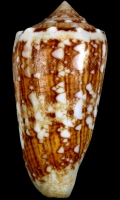 |
|
|
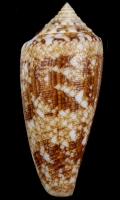 |
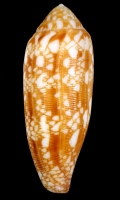 |
|
|
C. ammiralis (5)
|
C. arenatus
|
C. aristophanes
|
C. aureus (5)
|
C. auricomus (5)
|
C. aulicus
|
|
|
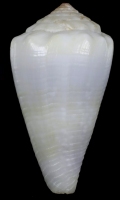 |
|
|
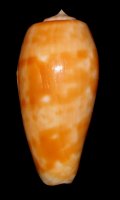 |
|
|
C. aulicus
|
C. balteatus (5)
|
C. bandanus
|
C. betulinus
|
C. bullatus f. pongo
|
C. canonicus
|
|
|
|
|
|
|
|
|
C. canonicus
|
C. canonicus |
C. capitaneus
|
C. catus
|
C. catus
|
C. catus
|
|
|
|
|
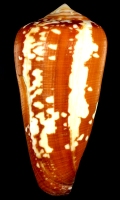 |
|
|
| C. ceylanensis | C. chaldeus |
C. coronatus
|
C. crocatus (5)
|
C. cylindraceus
|
C. distans
|
|
|
|
|
|
|
|
| C. distans |
C. ebraeus (1)
|
C. episcopatus |
C. episcopatus
|
C. episcopatus
|
C. episcopatus
|
|
|
|
|
|
|
|
|
C. figulinus
|
C. flavidus
|
C. frigidus
|
C. fuscatus
|
C. geographus
|
C. geographus
|
|
|
|
|
|
|
|
|
C. gubernator f. leehmani
|
C. gubernator f. leehmani
|
C. gubernator f. leehmani
|
C. gubernator f. leehmani
|
C. gubernator f. leehmani
|
C. gubernator f. leehmani
|
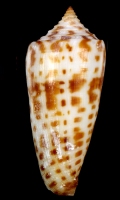 |
|
|
|
|
|
| Conus inscriptus (5) |
C. legatus
|
C. leopardus
|
C. litoglyphus
|
C. litteratus |
C. lividus
|
|
|
|
|
|
|
|
|
C. maldivus
|
C. maldivus
|
C. miles
|
C. miliaris
|
C. mitratus |
C. moreleti
|
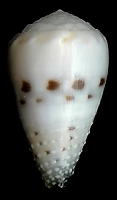 |
|
|
|
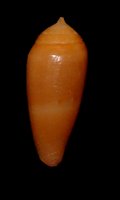 |
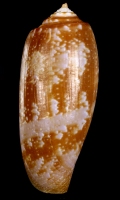 |
|
C. musicus f. ceylanensis
|
C. namocanus
|
C. nanus
|
C. nussatella
|
C. nucleus
|
C. obscurus (5)
|
|
|
|
|
|
|
|
|
C. omaria f. patonganus
|
C. parvatus
|
C. pennaceus (Local variation) |
C. pennaceus
(Local variation) |
C. pennaceus
(Local variation) |
C. pennaceus
(Local variation) |
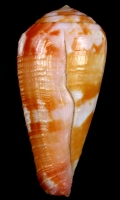 |
|
|
|
|
|
|
C. pertusus (5)
|
C. quercinus
|
C. rattus
|
C. sanguinolentus
|
C. sponsalis
|
C. striatellus
|
|
|
|
|
|
|
|
|
C. striatus
|
C. tenuistriatus
|
C. tessulatus
|
C. tulipa
|
C. varius
|
C. vexillum
|
|
|
|
|
|
|
|
|
C. violaceus
|
C. virgo
|
C. zeylanicus
|
C. zeylanicus |
C. zonatus (2)
|
|


